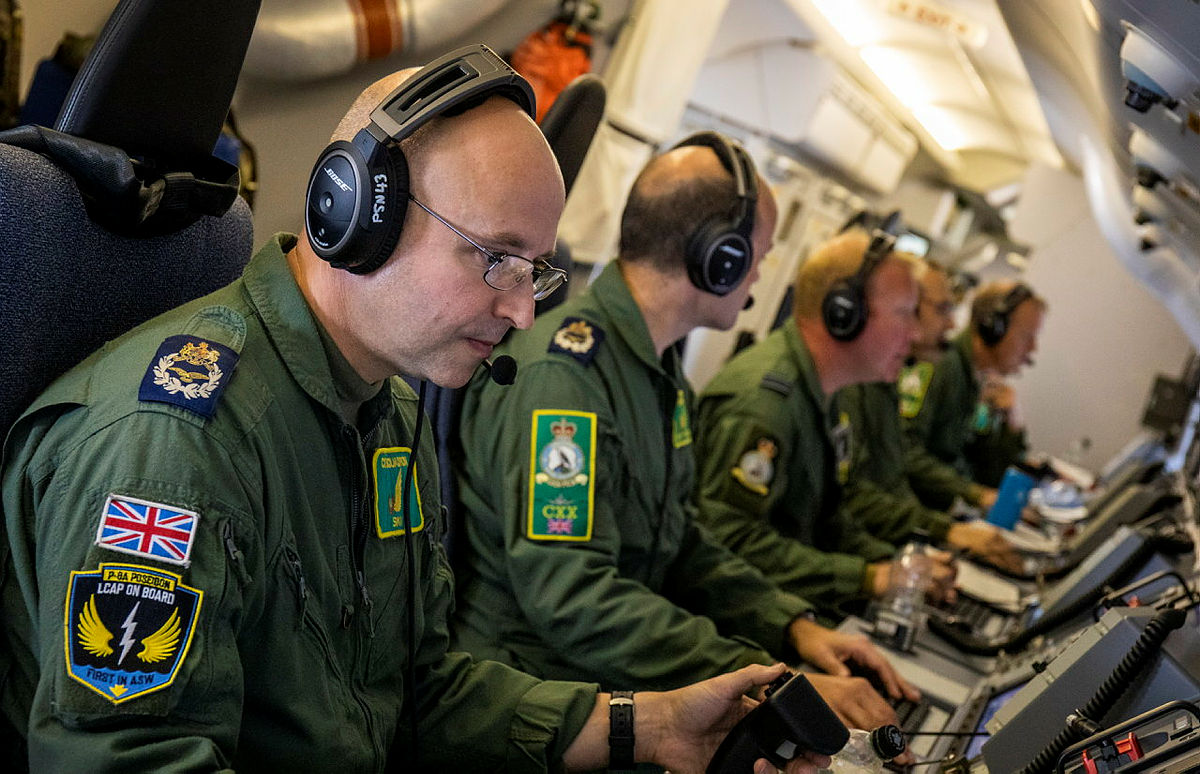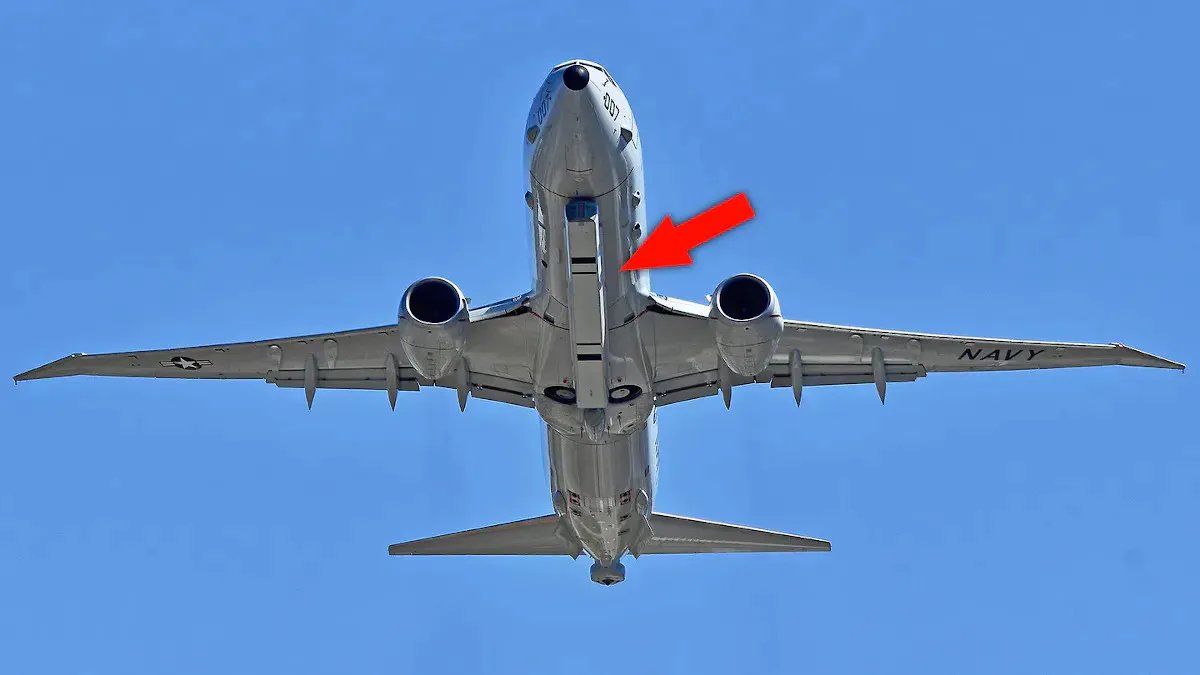British P-8 Poseidon Flies Unusual Overland Mission Along Polish Border
A U.K. Royal Air Force P-8A Poseidon maritime patrol aircraft was noted today flying in Polish airspace along the border with Russia and Belarus, apparently highlighting a significant, if overlooked, overland surveillance mission for the type. The unusual flight comes amid rising tensions between NATO and Russia in the region, following the Russian drone incursions into Polish airspace last week. Since then, more Russian drones have entered Romanian airspace, while NATO has begun deploying additional fighter jets to bolster Poland’s air defenses.
Evidence of today’s Royal Air Force P-8 mission appeared on publicly available flight-tracking websites, which showed the Poseidon, serial number ZP809, flying up and down the Polish side of the border with the Russian exclave of Kaliningrad in the north and with Belarus in the south. The P-8 was operating from its home base of RAF Lossiemouth in Scotland.
The P-8 may be generally described as a maritime patrol platform, but is more accurately a multi-mission type with extensive intelligence, surveillance, and reconnaissance (ISR) capabilities. These are equally relevant for missions over land or over water. Even without any specific modifications, the P-8’s standard electronic support measures (ESM) suite allows it to act in an electronic intelligence (ELINT) collection role, specifically on enemy air defenses and electronic order of battles. This is something we will come back to later in this story.
As its main operator, the U.S. Navy has further adapted a handful of P-8s for specialized ISR, with modifications such as a secretive radar system, the AN/APS-154 Advanced Airborne Sensor, or AAS. Even without AAS, the U.S. Navy regularly uses P-8s to execute intelligence-gathering duties, specifically ELINT, outside of its sea control/anti-submarine warfare/anti-surface warfare tasks.
This is just part of the U.S. Navy’s extensive investments in further expanding the capabilities of its P-8s with new munitions, podded self-protection systems, and other improvements.

As for the Royal Air Force, however, the small fleet of just nine aircraft at Lossiemouth means that these have been primarily tasked with patrolling the North Atlantic, including the strategically vital Greenland, Iceland, United Kingdom Gap, better known as the GIUK Gap. This includes defending against potential Russian aggression and tracking Russian submarine activity, which has been a growing area of concern for some time now, as well as protecting the U.K. Royal Navy’s nuclear-powered ballistic missile submarines (SSBNs) when they go out on deterrence patrol.
Indeed, the small size of the Royal Air Force P-8 fleet saw the United Kingdom discuss plans to team up with Norway to cooperate on Poseidon operations, and, in the future, Germany will be added to this group. This will provide a further boost to NATO’s ability to effectively patrol the North Atlantic.
As regards using its P-8s for overland ISR, the Royal Air Force has previously been lukewarm on this.
According to Gareth Jennings, the aviation desk editor at Janes, the Royal Air Force once planned to use the P-8 for overland surveillance, but shelved the idea due to the small number of aircraft being purchased
Whether the mission over Poland today signals some kind of change is unclear, but we have reached out to the U.K. Ministry of Defense and NATO to try and find out more about this flight.
Suffice it to say, activities in Kaliningrad and Belarus right now mean there are plenty of points of considerable interest to NATO.
Currently, the armed forces of Russia and Belarus are conducting the first iteration of their joint Zapad maneuvers since Russia’s full-scale invasion of Ukraine in 2022.
The Zapad drills — meaning ‘West’ — are widely seen as intimidation exercises directed against NATO’s eastern flank. Ahead of the exercise, Poland said it was deploying 40,000 troops along its borders with Belarus and Russia. Poland had previously closed most border crossings with Belarus, leaving only two in operation.
It’s also worth recalling that the Zapad-2021 exercise was used, in part, as cover for the westward movement of troops and equipment months before Moscow launched its all-out assault on Ukraine.
The scenario for Zapad-2025 involves an imagined Western invasion of Belarus. Although much smaller than in pre-2022 editions, the close coordination of Russian and Belarusian forces, including armor, crewed and uncrewed aircraft, air defense systems, and naval assets, provides an ideal opportunity for intelligence gathering.

While we cannot know for sure at this point, today’s P-8 flight would appear to be entirely in line with that kind of intelligence-gathering mission.
Elsewhere in Poland, Foreign Minister Radosław Sikorski reiterated that, while the drones that entered Poland last week were capable of carrying warheads, they were not loaded with explosives.
Increasingly, NATO leaders in Europe are seeing the Russian drone incursions as a deliberate, incremental escalation directed against NATO. This kind of approach is very much in line with an escalating campaign of hostile activities short of all-out war across Europe, of which Russia has been accused. The tempo of the operations has stepped up since Moscow launched its all-out invasion of Ukraine. Even before then, Russia had a long history of so-called hybrid or gray-zone warfare operations that fit this same description.
The weekend saw another Russian drone incursion, this time in Romania and much smaller in scale than last week’s in Poland.
At least one Russian drone entered Romanian airspace at 6.05 p.m. local time on Saturday during a strike on neighboring Ukraine.
According to the Romanian Ministry of Defense, the drone was intercepted by two Romanian F-16s, which were carrying out an air patrol mission in northern Dobruja and which came close to downing it, after gaining both radar and visual contact.
The drone orbited for about 50 minutes, according to the defense ministry, before leaving Romanian airspace near the town of Pardina in northern Dobruja, heading toward Ukraine.

The Romanian foreign minister summoned the Russian ambassador to protest the incident, which also drew further condemnation from European Union leaders.
In a statement, the Romanian Ministry of Defense said that the various drone incursions in recent days “represent a new challenge to regional security and stability in the Black Sea area.”
Meanwhile, European Commission President Ursula von der Leyen said: “Russia’s incursion into Romanian airspace is once again a blatant violation of EU sovereignty and a serious threat to regional security.”
This morning, Russia attempted to deflect the blame, describing the drone incursion as “a provocation” by Kyiv, but providing no evidence to back this up.
The first additional NATO fighters have now arrived in Poland to help bolster air defenses on the alliance’s eastern flank. These are French Air and Space Force Rafales from Escadron de Chasse 2/4 “La Fayette,” which are now at Mińsk Mazowiecki Air Base in eastern Poland. While there has been some surprise in certain quarters that this is a unit with a nuclear tasking, it’s one of two units that have a nuclear mission alongside other roles, including air defense.

Last Friday, NATO leaders announced details of a new mission, Eastern Sentry, which includes the deployment of two F-16s and an anti-air warfare frigate by Denmark, the three Rafales from France, and four Eurofighters from Germany. Already forward-deployed to help defend NATO’s eastern flank are F-35As from Italy and the Netherlands, based in Estonia and Poland, respectively.
A NATO spokesperson told TWZ today that the first activation of Eastern Sentry saw the alliance scramble fighters in both Poland and Romania over the weekend, including the newly arrived French Rafales, and also placed ground-based air defenses on alert. In related news, German Eurofighters are now under NATO control too, but they have, so far, not scrambled as part of this operation.
Today, the United Kingdom confirmed its plans to add Royal Air Force Typhoon fighters to Eastern Sentry, with the U.K. Defense Secretary John Healey writing on X that “Russia crossed a line with the reckless drone incursions into NATO airspace.” The deployment of Typhoons to help defend Polish airspace “is a message to Moscow: you tested NATO, we responded with strength and unity, Healey added.”
Also now in Poland are the three Mi-17 Hip helicopters that the Czech Republic also pledged to help defend NATO’s eastern flank. The rotorcraft are assigned to the Special Operations Air Task Unit (SOATU).
“We are fulfilling the promise we made to our close ally. Our soldiers are already in Poland and are ready to participate in strengthening the protection of airspace on Poland’s eastern border,” said Czech Minister of Defense Jana Černochová.
As to what happens next in NATO’s response to the drone incursions, Polish Foreign Minister Radosław Sikorski has suggested that NATO should consider imposing a ‘no-fly’ zone over Ukraine to protect the alliance from Russian drones. As we have explored in the past, establishing something like this over Ukraine would be no easy task, and the alliance previously rejected such a proposal amid fears that it could lead to direct confrontation with Russian combat aircraft.
Speaking about extending such missions into Ukrainian airspace, Sikorski told the German newspaper Frankfurter Allgemeine: “We as NATO and the EU could be capable of doing this, but it is not a decision that Poland can make alone; it can only be made with its allies.” He continued: “Protection for our population — for example, from falling debris — would naturally be greater if we could combat drones and other flying objects beyond our national territory. If Ukraine were to ask us to shoot them down over its territory, that would be advantageous for us. If you ask me personally, we should consider it,” Sikorski added.
The potential risks involved in such an initiative were reinforced today by a statement from top Kremlin official Dmitry Medvedev, who warned that the establishment of a ‘no-fly’ zone in Ukraine and allowing NATO allies to shoot down Russian drones would amount to a “NATO war with Russia.”
It appears that the kind of ‘no-fly’ zone that Sikorski is proposing would only shoot down Russian drones that were understood to be heading toward NATO airspace, although determining this would also not always be straightforward, with plenty of potential for misunderstanding between the alliance, Russia, and Ukraine.
Contact the author: [email protected]





